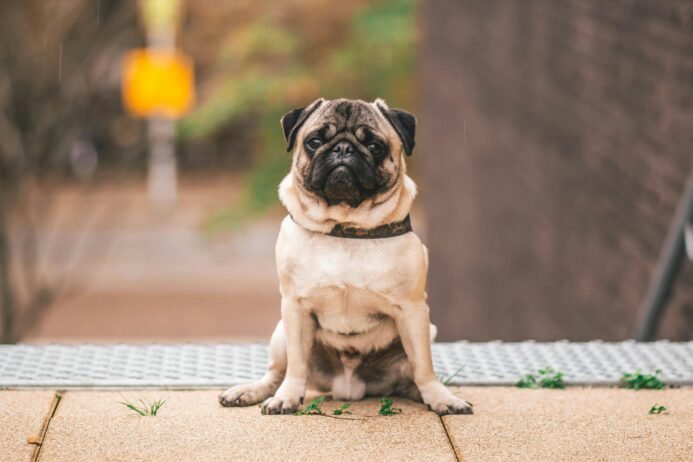Why Pugs Make Wonderful Family Pets
- 24 January 2025
- BuyAPet Editorial Team
- All Dogs
Why Pugs Make Wonderful Family Pets 🐾
More than a cute face—Pugs bring charm, adaptability, and affection to family life. Here’s what to know before you welcome one home.
The Pug is beloved for its personality and people-first nature. With a history as affectionate companions, Pugs have captivated pet owners worldwide. Whether you’re considering your first Pug or you’re already a fan, understanding the breed will help you make confident, caring choices.
Temperament, grooming, health, training, nutrition, exercise, costs—and how to find a responsible breeder or rescue.
Introduction: The Endearing Appeal of the Pug 💛
Captivating Charm
Small and sturdy with a wrinkled face and curled tail, Pugs are playful, people-focused, and adaptable to almost any home environment.
Myth-Busting
“Lazy” or “high-maintenance”? Not necessarily. With appropriate exercise and routine care, Pugs are lively, engaging companions.
Pugs’ Adaptable & Affectionate Personalities 🧩
Playful & Loving
Pugs adore attention and often have quirky antics that lift any mood. They live to be near their people and thrive on interaction.
Great With Kids & Pets
Generally gentle and social, Pugs can be wonderful with children and other animals when supervised and introduced thoughtfully.
Everyday Examples
Expect couch snuggles, toy chases, and a loyal little shadow following you from room to room.
Grooming & Maintenance: A Manageable Commitment 🧼
Shedding, Bathing & Brushing
- Moderate shedders—weekly brushing helps a lot.
- Occasional baths with gentle dog shampoo.
- Regular nail trims and daily dental care.
Tools & Techniques
Use a soft bristle or rubber curry brush; keep ear cleaner and dental chews/brushes on hand.
Skin Folds & Hot Spots
Gently clean facial folds and keep them dry to prevent irritation or infection. Check ears and teeth routinely.
Health Considerations & Lifespan 🩺
Common Concerns
- Brachycephalic airway challenges (heat & exercise sensitivity).
- Dental crowding; patella, eye, or hip issues in some lines.
- Weight management is crucial to reduce strain.
Vet Checkups Matter
Routine exams, vaccinations, parasite prevention, and proactive dental care support comfort and longevity.
Life Expectancy
Typically around 13–15 years with good genetics, a balanced diet, appropriate exercise, and regular veterinary care.
Warm-weather safety ☀️
Pugs can overheat quickly. Walk during cooler hours, carry water, avoid intense exertion, and watch for heavy panting or glassy eyes.
Training & Socialization: Keys to a Well-Adjusted Pug 🎓
Positive Reinforcement
Reward desired behaviours with treats, toys, or praise. Short, upbeat sessions work best.
Early Socialization
Introduce people, pets, sounds, and surfaces early. Puppy classes help build confidence and manners.
Common Challenges
- Can be a tad stubborn—keep it fun and consistent.
- Barking or attention-seeking—meet needs, teach “quiet,” and enrich daily.
Nutritional Needs & Exercise Requirements 🍽️🏃♂️
Balanced Diet
Choose a complete, high-quality food; measure portions to prevent obesity. Fresh water at all times.
Smart Exercise
Moderate, regular activity—short walks, indoor play, and sniff games. Avoid overexertion and hot conditions.
Watch the Scale
A healthy Pug has a visible waist from above and ribs you can feel without pressing hard. Ask your vet if unsure.
Cost of Ownership: Budgeting for Your Pug 💷
Initial Costs
- Adoption/breeder fees and initial vet checks.
- Essentials: bed, crate, bowls, harness/leash, toys.
- Microchip, parasite prevention.
Ongoing Expenses
- Food, routine vet care, dental cleanings.
- Grooming tools/products; occasional pro grooming.
- Pet insurance or savings for unexpected needs.
Emergency Buffer
Set aside funds for sudden illness or injury—peace of mind for you, fast care for your Pug.
Conclusion: Making the Right Choice for Your Family ✅
Pugs bring joy, cuddles, and character to a household. With thoughtful training, routine care, and sensible exercise, they fit beautifully into many lifestyles.
Ready to meet your match? Explore rescues and reputable breeders to find the temperament that suits your family.
Find Responsible SourcesFinding a Responsible Breeder or Rescue 📚
Adoption
Check local shelters and breed-specific rescues; ask about health history, temperament, and foster notes.
Reputable Breeders
- Health testing, transparent records, and contracts.
- Puppy socialization plans and lifetime take-back policy.
- Willing to answer questions and match on temperament.
Vet Partnership
Choose a vet comfortable with brachycephalic breeds; schedule routine wellness and dental care.
This guide provides general information and isn’t a substitute for professional veterinary or training advice.
